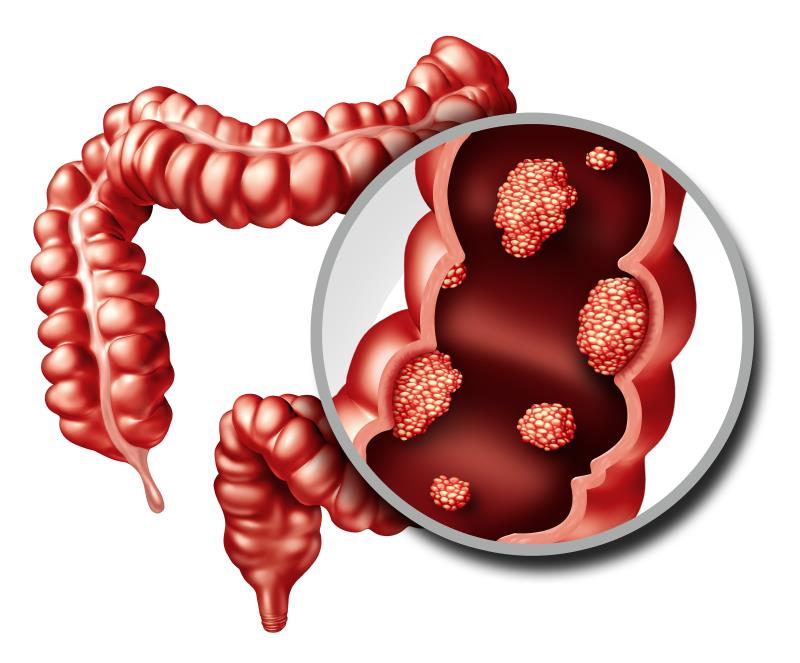
Patients with advanced adenomas and large serrated polyps on initial endoscopy are at greater risk of colorectal cancer (CRC) and may benefit from more intensive surveillance, a recent study has found.
Drawing from the Nurses’ Health Study 1 and 2 and from the Health Professionals Follow-up Study, researchers identified 122,899 participants who had undergone flexible sigmoidoscopy or colonoscopy. The outcome was the relationship between endoscopic findings and the risk of developing CRC.
Of the participants, 6,161 had at least one conventional adenoma, of which 32 percent (n=1,985) had large lesions and 25 percent (n=1,539) had advanced histology; a total of 2,453 had advanced adenoma. In comparison, 5,918 patients had serrated polyps (SP), of whom 10 percent (n=566) had at least one large SP and 10 percent (n=579) had at least three lesions; 112,107 had no polyps.
Over a median follow-up of 10 years, 491 incident cases of CRC were reported, with 5-year and 10-year cumulative incidence rates of 0.2 percent and 0.4 percent, respectively, in participants who had no polyps.
Corresponding rates were higher for those with advanced adenomas (0.6 percent and 1.7 percent, respectively) and with large SPs (0.4 percent and 1.1 percent, respectively).
Multivariate Cox proportional hazards analysis confirmed that advanced adenomas drove the link between the presence of adenomas and CRC risk (hazard ratio [HR], 4.07, 95 percent confidence interval [CI], 2.89–5.72; p<0.001). Similarly, large SPs explained the correlation between SP presence and the likelihood of CRC (HR, 3.35, 95 percent CI, 1.37–8.15; p=0.008).